Report
by Tim Hunter
Unfortunately, most people today live in urban and suburban communities filled with light pollution. They have not experienced the dark skies that were found everywhere in the United States a generation ago. Unless someone has lived on a farm, gone to camp in the mountains or woods away from the city, or joined an astronomy club, he or she has no idea what constitutes a dark sky or what has been lost in the last generation. Light pollution is a pernicious evil that has crept up on us slowly. Older persons remember what it was like to see the stars at night, even in the middle of a city. They more acutely feel the loss of the stars. They did not grow up with bright yellow skies.
When I was young – a very long time ago in the 1950’s and 1960’s – I was an active amateur astronomer. I had a four-inch reflector, which I bought for $50 in 1956. I lived in the suburbs of Chicago and was more concerned about the elm trees surrounding our house blocking my view of the sky than I was about light pollution. The Milky Way was easily visible through the trees. Only gradually did I become aware the stars were disappearing from urban and suburban areas due to increasing light pollution. Unfortunately, the elm trees and the stars are long gone from my boyhood home.
In 1985 I had an unexpectedly large tax return. It was like free money, even though I knew it was my own money I overpaid. It was a form of savings for which I got no interest. I decided to buy a piece of land in a dark sky site for a large telescope. I had talked about this for years but had never actually done anything. One thing led to another, and I purchased 20 acres of land 40 miles southeast of Tucson on high grasslands plateau at 5000 foot altitude. Thus started the Grasslands Observatory. As the observatory developed, I realized my amazingly dark sky was a very precious and fragile resource. I noticed what seemed like a lot of bad lights around Tucson. Moreover, University Medical Center (UMC) in Tucson converted its old dim globe style lights into unshielded low pressure sodium (LPS) lighting. I was aghast. It was bright and spoiled the sky. How could this happen? I asked the hospital director about it, and she told me astronomers had recommended this lighting.
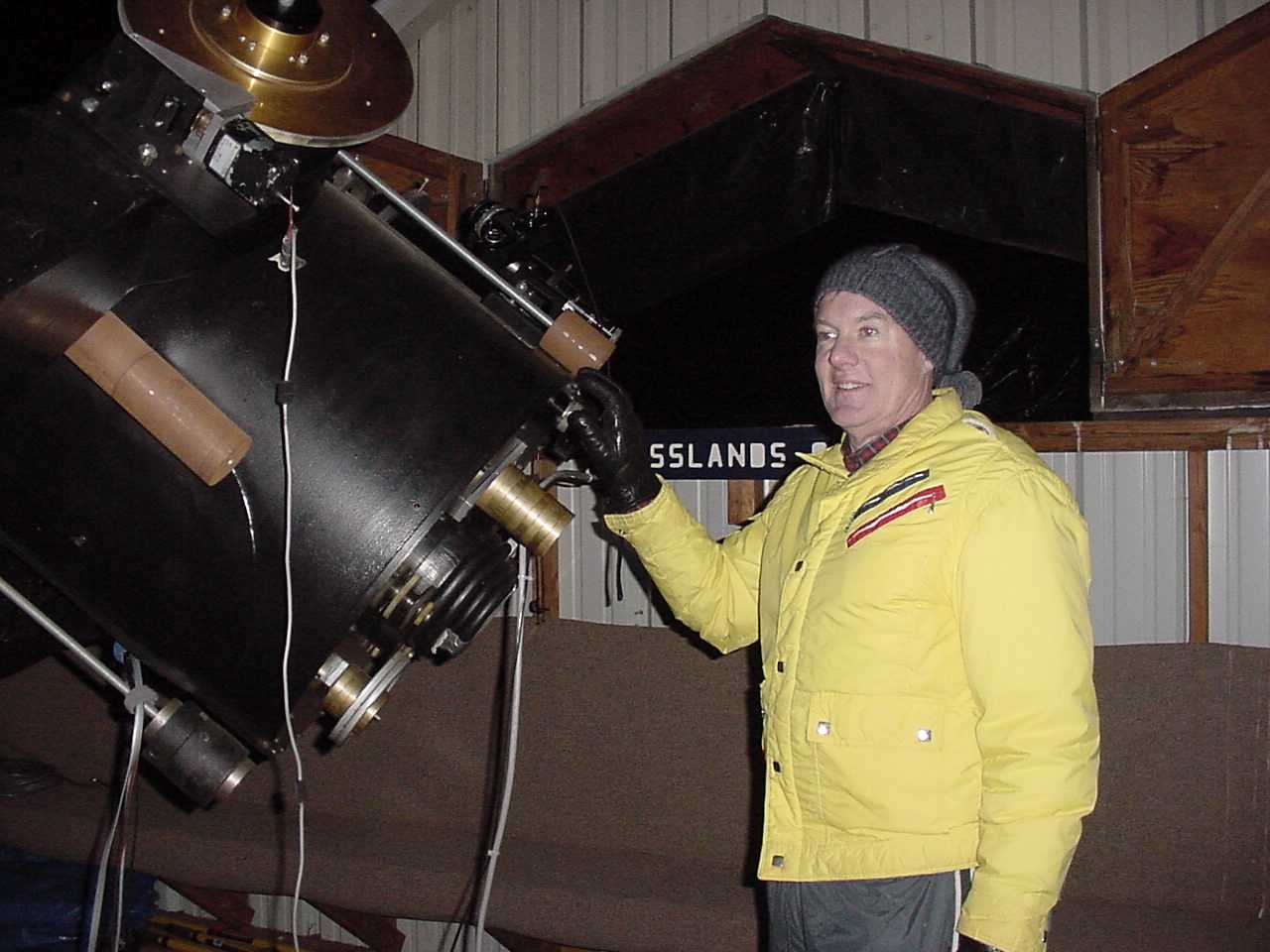
Dr. Hunter by his 24-inch telescope at the Grasslands Observatory.
At that time the Dark Sky Office at Kitt Peak National Observatory was headed by Dr. David Crawford, an internationally renowned astronomer for being the project leader for the largest telescope on Kitt Peak and for his work on stellar photometry. Professional astronomers prefer LPS lighting as its somewhat monochromatic spectrum is easy to filter. That is fine with me as long as the light is shielded. An unshielded LPS fixture is just as bad for an amateur astronomer as any other poor lighting design. I had several meetings with Dave Crawford and Bill Robinson, SR, who ran the Dark Sky Office at Kitt Peak, about my concerns with their lighting recommendations. What started off as a contentious discussion developed into a friendship and a mutual goal of protecting the night sky. We exchanged slides, and I began to learn about lighting, light trespass, and light pollution.
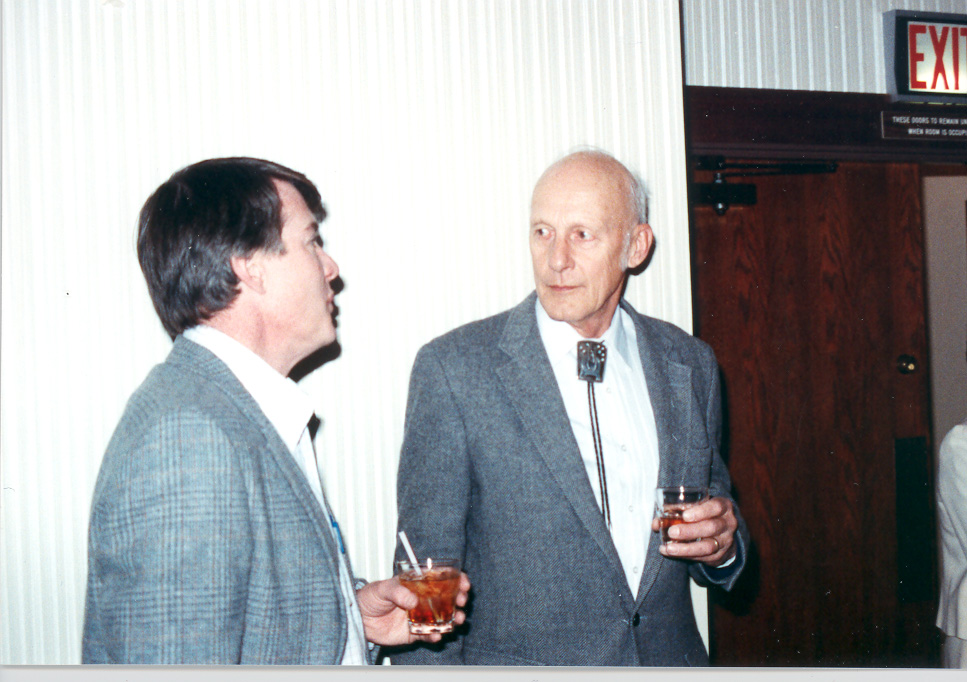
Dr. Hunter(L) and Art Hoag(R). Art was a professional astronomer and was at Kitt Peak Observatory in part of his career. He is the one responsible for the 1972 Tucson lighting ordinance, the first lighting ordinance in the world that tried to address the global issue of light pollution with protection of astronomical skies in mind. He was active in the Tucson Amateur Astronomy Association (TAAA) and IDA. Art was a mentor to David Crawford and got him interested in light pollution.
I realized light pollution is a relatively easy environmental problem to solve, but nobody was doing anything about it. Finally, one day I said we ought to form an organization to address this issue to help ourselves and others. I had recently completed the process of incorporating the Tucson Amateur Astronomy Association (TAAA) as a non-profit corporation in Arizona. I recommended we found an organization devoted to combating light pollution, radio frequency interference to astronomy, and space debris. Dave agreed, and we were on our way. I filed the papers for IDA’s incorporation and came up with the IDA acronym.
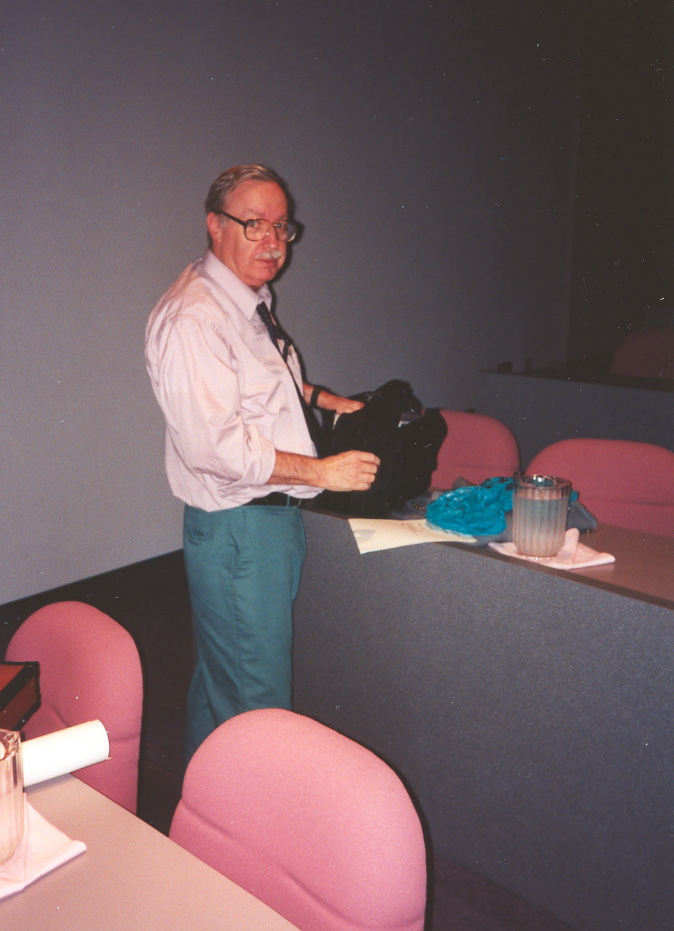
David Crawford at an early IDA Annual Meeting. Dave started the Kitt Peak Dark Sky Office with an engineer the late Bill Robinson. Dave was a world famous astronomer for his photometric stellar work and his being the project manager for the large 4 meter telescopes on Kitt Peak and Cerro Tololo prior to his ever becoming involved in the light pollution struggle.
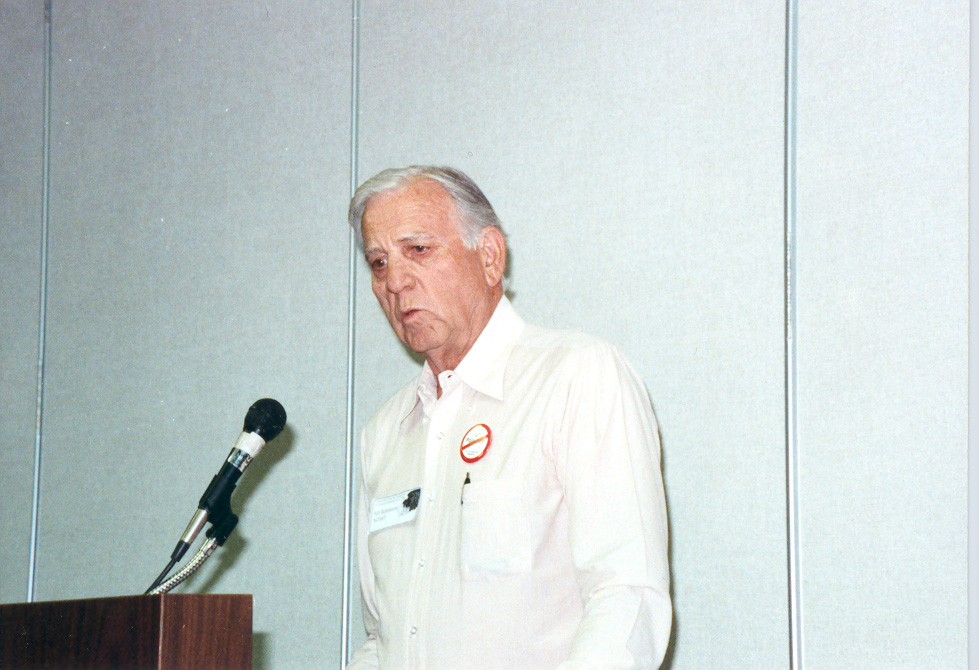
Engineer Bill Robinson, Bill ran the Dark Sky Office for many years and was instrumental in measuring lighting levels around Tucson and Pima County and promoting lighting ordinances throughout Arizona. He and Dave started a very early association with professional lighting engineers which is essential if we hope to have proper nighttime lighting for safety, security, and recreation while protecting dark skies.
The International Dark-Sky Association, Inc. (IDA) was incorporated in Arizona in 1987 as a tax-exempt non-profit organization, exclusively for educational and scientific purposes within the meaning of Section 501(c)(3) of the United States Internal Revenue Code of 1987. It received its 501(c)(3) approval from the IRS in 1988. Dave rolled the new IDA goals into his then professional work and thereafter for many years devoted most of his waking hours to IDA developing it into the wonderful organization it is today. IDA has far outgrown its founders and surpassed our every hope for it.
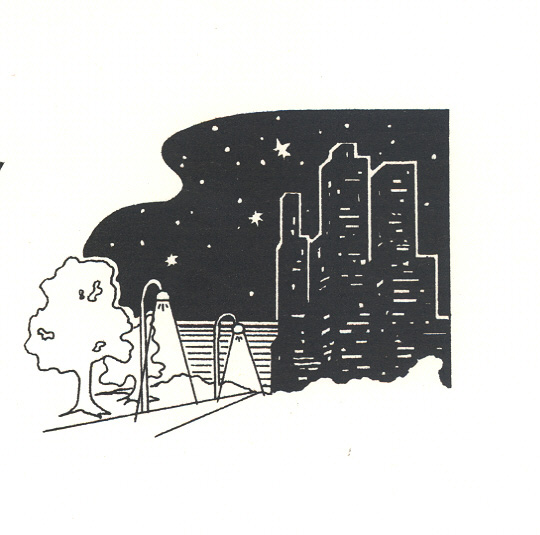
The original IDA logo.
###
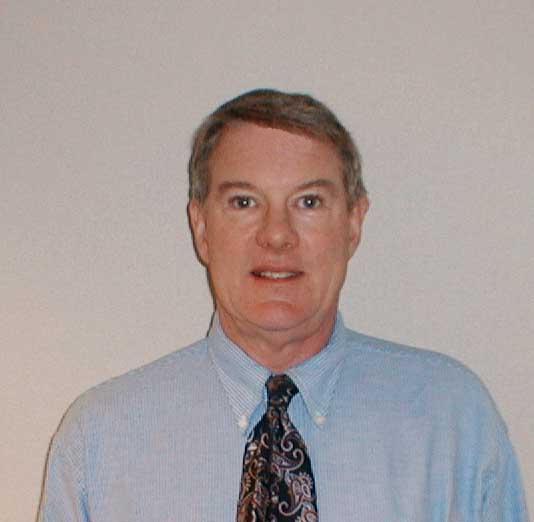 Tim Hunter obtained a BA from DePauw University in 1966, an MD from Northwestern University in 1968, a BS from the University of Arizona in 1980, and an MSc degree from Swinburne University (Melbourne) in 2006. Currently, Dr. Hunter is a Professor in the Department of Radiology in the College of Medicine at the University of Arizona and was Head of the department 2008-2011. He was on the Arizona Medical Board (AMB) 1997-2006.
Tim Hunter obtained a BA from DePauw University in 1966, an MD from Northwestern University in 1968, a BS from the University of Arizona in 1980, and an MSc degree from Swinburne University (Melbourne) in 2006. Currently, Dr. Hunter is a Professor in the Department of Radiology in the College of Medicine at the University of Arizona and was Head of the department 2008-2011. He was on the Arizona Medical Board (AMB) 1997-2006.
Dr. Hunter has been an amateur astronomer since 1950, and he is the owner of two observatories, the 3towers Observatory and the Grasslands Observatory. He is also a prime example of someone whose hobby has run amok, spending more time and money on it than common sense would dictate. He has been the President of the Tucson Amateur Astronomy Association, Inc. (TAAA) and a member of the TAAA since 1975. He currently is the Chair of the Board of Trustees of the Planetary Science Institute (PSI). Since 1986, D. Hunter has been interested in the growing problem of light pollution. In 1987, he and Dr. David Crawford founded the International Dark-Sky Association, Inc. (IDA). IDA is a nonprofit corporation devoted to promoting quality outdoor lighting and combatting the effects of light pollution.








Comments